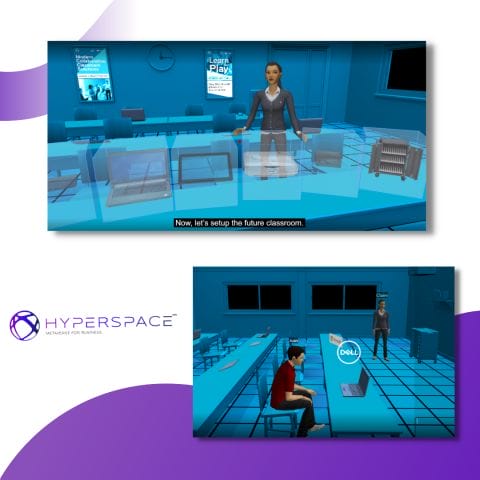Why do some people seem to flourish in their personal and professional lives, constantly growing and achieving great things, while others struggle to break free from their limitations? The answer lies in overcoming resistance to learning, a common barrier that holds individuals back from reaching their full potential.
When faced with new knowledge or skills, many of us experience psychological or emotional barriers that hinder our ability to embrace the learning process wholeheartedly. It’s time to dive deep into the concept of learning resistance, understand its impact on personal and professional growth, and discover strategies for fostering engagement and unleashing your true potential.
Key Takeaways:
- Resistance to learning is a psychological barrier that can manifest as a lack of motivation, fear of change, or perceived irrelevance.
- Identifying the underlying causes of resistance is crucial for developing effective strategies to address and overcome it.
- A positive learning environment, effective communication, empowerment, support, recognition, and a learning culture are key factors in overcoming resistance to learning.
- Overcoming resistance to learning is essential for personal and professional growth, leading to continuous learning and the success of individuals and organizations.
- By implementing the strategies discussed in this article, you can unlock your potential, overcome resistance, and embark on a journey of continuous growth and success.
What is Resistance to Learning?
Resistance to learning refers to the psychological or emotional barriers that individuals may experience when acquiring new knowledge or skills. It can manifest as a lack of motivation, difficulty grasping new concepts, or persistent avoidance of learning activities. The factors contributing to resistance include fear of change, low self-efficacy, and a perceived irrelevance of the learning content.
When faced with resistance to learning, individuals may feel uncertain, anxious, or resistant to stepping out of their comfort zone. This can hinder their ability to engage in new learning experiences and growth opportunities.
To address resistance to learning, it is important to understand the specific psychological barriers that individuals may be facing. By identifying and addressing these barriers, organizations can create a supportive environment that promotes a positive learning experience.
“Resistance to learning is not a sign of weakness, but rather a natural reaction to the unfamiliar. Overcoming this resistance requires empathy, patience, and the implementation of effective strategies that address the root causes.”
By fostering a learning culture that values individual growth and development, organizations can encourage individuals to overcome their resistance and embrace new learning opportunities.
Understanding Psychological Barriers to Learning
There are several psychological barriers that contribute to resistance to learning:
- Fear of Change: The fear of change can prevent individuals from embracing new learning experiences due to the uncertainty and discomfort it entails.
- Lack of Motivation: Individuals may lack motivation to learn if they do not see the relevance or value of the learning content to their personal or professional goals.
- Low Self-Efficacy: Negative self-beliefs and feelings of inadequacy can undermine an individual’s confidence in their ability to learn and succeed, leading to resistance.
- Perceived Irrelevance: If individuals perceive the learning content as irrelevant to their current or future roles, they may resist engaging in the learning process.
Addressing these psychological barriers requires a multifaceted approach that includes creating a positive learning environment, promoting open communication, and providing support and feedback.
Understanding the Causes of Resistance

Resistance to learning is influenced by various underlying factors that contribute to individuals’ reluctance or hesitation to engage in the learning process. By identifying and understanding these causes, organizations can develop effective strategies to address and overcome resistance. The following factors play a significant role in shaping individuals’ resistance to learning:
- Fear of Failure: The fear of failure is a common psychological barrier that can hinder individuals from actively pursuing learning opportunities. It stems from the anxiety or worry of making mistakes, being judged, or facing negative consequences. This fear can prevent individuals from taking risks, exploring new ideas, and embracing challenges.
- Lack of Relevance: When individuals fail to perceive the relevance or significance of the learning material to their current roles, responsibilities, or goals, they may exhibit resistance. The perceived lack of connection between the learning content and their real-world applications can demotivate individuals and hinder their engagement.
- Comfort with Existing Knowledge: Individuals who have achieved a certain level of mastery or competence in a particular domain may resist learning new skills or acquiring additional knowledge. The comfort they feel with their existing knowledge can create a sense of complacency, making them less inclined to engage in further learning.
- Low Self-efficacy: Self-efficacy refers to individuals’ beliefs in their ability to successfully perform a specific task or achieve desired outcomes. Individuals with low self-efficacy may doubt their capabilities and feel inadequate or incompetent when faced with learning challenges. This lack of confidence can result in resistance to learning.
Resistance to learning is influenced by various factors such as fear of failure, lack of relevance, comfort with existing knowledge, and low self-efficacy.
Understanding these underlying factors is crucial for organizations to design targeted interventions and create an environment that addresses individuals’ resistance to learning. By addressing these causes head-on, organizations can foster a culture of continuous learning and empower individuals to embrace new knowledge and skills.
Identifying Resistance in the Workplace
Identifying resistance to learning in the workplace is crucial for creating a supportive environment that encourages employee growth and development. By recognizing the signs of resistance, organizations can address the underlying issues and implement strategies to overcome them.
When observing behaviors, attitudes, and engagement with the learning process, several indicators can help identify resistance:
- Lack of Participation: Employees who consistently avoid or withdraw from learning activities indicate a resistance to engage in the learning process.
- Negative Attitude: A persistent negative outlook or skepticism towards learning initiatives portrays resistance to embrace new knowledge or skills.
- Procrastination: Employees who constantly delay or postpone learning tasks exhibit resistance to prioritize and engage in the learning process.
- Inconsistent Effort: Fluctuating levels of motivation and effort in learning activities reflect resistance to dedicate consistent time and energy.
- Defensiveness: Individuals who become defensive or rigid when faced with new ideas or feedback demonstrate resistance to open-mindedness and growth.
- Absence of Curiosity or Inquiry: Little to no expression of curiosity, questioning, or seeking additional knowledge signifies resistance to explore beyond existing understanding.
By noting these signs of resistance, organizations can tailor their approach to address the specific challenges faced by employees. Overcoming resistance requires a comprehensive strategy that fosters engagement, encourages active participation, and creates a positive learning culture.
“Identifying resistance in the workplace is the first step towards creating a supportive learning environment that empowers employees to overcome challenges and embrace continuous growth.”
Creating awareness around resistance and providing appropriate interventions can make a significant impact on employee development and organizational success.
Visually appealing and thought-provoking, this image illustrates the dynamics of identifying resistance in the workplace.
The Role of Communication and Feedback
Effective communication and feedback mechanisms play a crucial role in identifying and addressing resistance. Regular conversations, surveys, and one-on-one sessions can provide valuable insights into employee concerns, motivations, and learning preferences.
Table: Examples of Communication and Feedback Strategies
| Strategy | Description |
|---|---|
| Open and Transparent Communication | Promote a culture of honesty, trust, and open dialogue to enable employees to express their concerns and provide feedback on learning initiatives. |
| Frequent Check-Ins | Regularly schedule individual or team meetings to discuss progress, challenges, and opportunities for growth. |
| Anonymous Surveys | Conduct anonymous surveys to gather honest feedback regarding employee experiences, learning preferences, and potential hurdles. |
| 360-Degree Feedback | Encourage employees to provide feedback to their peers, managers, and leaders to foster a culture of mutual learning and support. |
By leveraging effective communication channels and feedback mechanisms, organizations can proactively identify resistance to learning and implement targeted strategies to overcome it. This approach creates an inclusive and supportive learning environment that empowers employees to embrace continuous growth and development.
Strategies for Creating a Positive Learning Environment

Creating a positive learning environment is essential for fostering engagement and overcoming resistance to learning. By implementing strategies that promote open communication, respect diverse perspectives, and establish a safe space for team members to share their opinions, organizations can create a conducive environment for effective learning. Additionally, incorporating learning accountability partners and fostering group learning can further enhance the positive learning environment.
Open Communication
Encouraging open communication within the learning environment enables individuals to freely express their thoughts, ideas, and questions. This fosters collaboration and creates opportunities for meaningful discussions, feedback, and knowledge sharing. When team members feel heard and valued, they are more likely to actively engage in the learning process and overcome any resistance they may have.
Respect Diverse Perspectives
Embracing diverse perspectives breeds a rich learning experience. By acknowledging and respecting individual differences, such as cultural backgrounds, experiences, and expertise, organizations can create an inclusive learning environment. This encourages individuals to contribute their unique insights, leading to a deeper understanding of concepts and the development of innovative solutions.
“In a positive learning environment, everyone’s contributions are valued, leading to a greater sense of ownership and motivation.” – Sarah Johnson, Learning and Development Manager
Safe Space
Creating a safe space within the learning environment allows individuals to take risks, experiment, and make mistakes without fear of judgment or negative consequences. When individuals feel safe to explore new ideas and approaches, they are more likely to embrace challenges and overcome any resistance they may have towards learning. Building trust and promoting psychological safety is key in cultivating a safe learning environment.
Learning Accountability Partners
Pairing individuals with learning accountability partners can significantly enhance the learning experience. Accountability partners provide support, encouragement, and motivation, holding each other responsible for their learning goals. This partnership fosters a sense of commitment and drives individuals to overcome resistance by staying focused and accountable throughout their learning journey.
Group Learning
Learning in groups not only provides opportunities for collaboration and peer support but also enhances engagement and motivation. Within a positive learning environment, individuals can benefit from the diverse knowledge and perspectives of their peers. Group discussions, projects, and activities encourage active participation and the sharing of ideas, ultimately overcoming resistance to learning.
| Benefits of a Positive Learning Environment | Strategies for Implementation |
|---|---|
| Enhanced engagement | Encourage open communication |
| Increased motivation | Respect diverse perspectives |
| Improved collaboration | Create a safe space |
| Deeper understanding of concepts | Implement learning accountability partners |
| Innovative problem-solving | Facilitate group learning |
Communicating the Relevance and Benefits of Learning
When it comes to overcoming resistance to learning, effective communication plays a vital role. By clearly and compellingly communicating the benefits and relevance of learning, organizations can motivate their employees to embrace lifelong learning. Here are some strategies to enhance communication and foster engagement:
- Newsletters and Intranet: Utilize internal newsletters and intranet platforms to share updates and information about learning opportunities. Highlight the value of learning and the positive impact it can have on personal and professional growth.
- Face-to-face meetings: Arrange regular face-to-face meetings to discuss learning objectives and outcomes. Provide a platform for open dialogue where employees can ask questions, share their experiences, and seek clarification on any doubts or concerns.
- Learning Objectives: Clearly articulate the learning objectives to help employees understand what they will gain from participating in the learning program. Emphasize how the skills and knowledge acquired will contribute to their personal and professional development.
- Outcomes: Share success stories and real-life examples of individuals who have benefitted from previous learning programs. Highlight the positive outcomes and career advancements achieved through continuous learning.
- Testimonials and Success Stories: Leverage testimonials and success stories from employees who have successfully applied their learning to overcome challenges and achieve their goals. These stories serve as powerful motivators and inspire others to persevere on their learning journey.
By implementing these strategies, organizations can effectively communicate the benefits of learning, enhance engagement, and create a culture of continuous learning and growth.
Testimonial:
“Embracing continuous learning has been one of the best decisions of my career. The organization’s emphasis on communication and sharing success stories motivated me to overcome my initial resistance. Today, I am equipped with valuable skills that have opened up new opportunities and enabled my professional growth.”
– Emily Johnson, Senior Marketing Manager
Empowering Employees in the Learning Process

Empowering employees in the learning process is key to increasing their ownership, responsibility, and accountability. By involving them actively, organizations can create a collaborative and engaging environment that fosters continuous learning and growth.
One effective technique is co-design, where employees are involved in the creation and design of learning activities. This approach not only allows them to contribute their insights and expertise but also increases their sense of ownership and investment in the learning process.
Peer learning is another powerful method to empower employees in the learning process. By encouraging collaboration and knowledge-sharing among peers, individuals can learn from each other’s experiences and insights. This not only expands their understanding but also promotes a sense of community and support.
Mentoring is also a valuable approach to empower employees in their learning journey. Pairing less experienced individuals with seasoned professionals allows for personalized guidance, advice, and support. This not only strengthens relationships within the organization but also fosters the development of new skills and knowledge.
Gamification is an innovative strategy that can add an element of fun and excitement to the learning process. By incorporating game-like elements such as challenges, rewards, and competition, employees become more engaged and motivated to participate actively in their own learning.
Providing employees with autonomy and choice in their learning activities is another empowering approach. When individuals have the freedom to choose topics or learning methods that align with their interests and learning style, they are more likely to be motivated, engaged, and take ownership of their learning journey.
Techniques for Empowering Employees in the Learning Process
| Technique | Description |
|---|---|
| Co-design | Involving employees in the creation and design of learning activities. |
| Peer Learning | Promoting collaboration and knowledge-sharing among employees. |
| Mentoring | Pairing less experienced individuals with seasoned professionals for guidance and support. |
| Gamification | Incorporating game-like elements to make learning more engaging and motivating. |
| Autonomy and choice | Allowing employees to have control over their learning activities. |
Providing Support and Feedback
Support and feedback play a crucial role in helping individuals overcome resistance to learning. By offering guidance, coaching, and scaffolding, organizations can assist employees in navigating difficulties and building confidence. Additionally, adaptive learning techniques can cater to individual needs, enhancing engagement and progress. To gauge learning outcomes and boost motivation, incorporating quizzes, badges, and certificates can provide tangible recognition of achievements.
Coaching and Scaffolding
Coaching is an effective method to provide personalized support to employees. Through one-on-one sessions, coaches can identify areas of improvement, set goals, and help individuals overcome challenges. Scaffolding, on the other hand, involves breaking down complex concepts into manageable steps and gradually removing support as learners gain proficiency. This gradual release of responsibility empowers individuals to develop skills and knowledge at their own pace.
Adaptive Learning
Adaptive learning leverages technology to tailor educational experiences according to the learner’s needs and progress. By assessing individual strengths and weaknesses, adaptive learning platforms can provide personalized content, resources, and activities. This dynamic approach ensures that learners receive appropriate challenges and support, fostering continuous growth and maximizing learning outcomes.
Quizzes, Badges, and Certificates
Regular assessment of progress and performance can motivate learners and reinforce their achievements. Quizzes allow individuals to gauge their understanding of the material, identify areas for improvement, and track their progress over time. Badges and certificates act as visual representations of accomplishments, boosting confidence and providing a sense of recognition. These tangible rewards contribute to a supportive learning environment and inspire learners to persist in their educational journey.
By providing comprehensive support and feedback, organizations can create an environment that encourages growth, resilience, and continuous learning. Through coaching, scaffolding, adaptive learning, quizzes, badges, and certificates, employees can overcome resistance and confidently engage in the learning process.
Recognizing and Rewarding Learning Achievements
Recognizing and rewarding employees for their learning achievements and efforts is essential in reinforcing motivation, commitment, and loyalty. By acknowledging the progress and accomplishments of individuals, organizations can foster a culture of continuous learning and encourage employees to further develop their skills and knowledge.
Methods such as praise, incentives, promotions, and opportunities to apply and showcase learned skills can celebrate successes and provide meaningful motivation. Recognizing and rewarding learning achievements not only boosts the confidence and morale of employees but also inspires others to strive for excellence.
“Recognizing the efforts and achievements of employees creates a positive and supportive environment, leading to increased engagement and a willingness to pursue further learning opportunities.” – Jane Thompson, HR Manager
A crucial aspect of recognizing learning achievements is to ensure that rewards are aligned with individual and organizational goals. Rewards can be personalized to cater to the unique preferences and aspirations of employees, motivating them to continue their learning journey. It is important to emphasize the value and significance of these rewards, reinforcing the importance of continuous learning and growth within the organization.
Fostering a Culture of Recognition
Building a culture of recognition involves consistent and meaningful acknowledgment of learning achievements. This can be done through various means, including:
- Publicly highlighting learning accomplishments through company-wide announcements or newsletters
- Creating a dedicated space on the intranet to showcase and congratulate employees on their learning progress
- Organizing award ceremonies or special events to recognize outstanding learning achievements
Additionally, integrating recognition into the performance management process can further emphasize the importance of continual learning and growth. This can be achieved by incorporating learning-related goals and targets into employee performance evaluations, with rewards and incentives tied to their attainment.
Recognizing Learning Achievements through Certifications
| Certification | Description | Benefits |
|---|---|---|
| Professional Certification | Recognizes expertise in a specific field or industry |
|
| Internal Certification | Acknowledges mastery of specific skills within the organization |
|
| Industry Recognized Certification | Endorses proficiency in industry-standard practices or technologies |
|
Recognizing learning achievements through certifications is an effective way to validate the knowledge and skills acquired by employees. Certifications can be industry-recognized, internal, or professional, providing tangible evidence of an individual’s expertise and dedication. The benefits of certifications extend beyond personal satisfaction and include enhanced credibility, increased career opportunities, and a competitive advantage in the job market.
Creating a Learning Culture
Creating a learning culture within an organization is essential for fostering continuous learning and development. When an organization prioritizes a learning culture, it sets the stage for employees to thrive and reach their full potential. Here’s how organizations can cultivate a learning culture:
- Aligning Learning Strategies with Organizational Goals and Culture: It is important to align learning strategies with the overall goals and culture of the organization. When learning initiatives are closely tied to the organization’s vision and values, employees can see the direct relevance and value of their learning efforts.
- Promoting Leadership and Role Models: Leadership plays a crucial role in shaping a learning culture. When leaders prioritize learning and actively participate in the learning process, it sets a positive example for the rest of the organization. Recognizing and celebrating employees who exemplify a commitment to learning also reinforces the importance of continuous growth.
- Establishing Communities of Practice: Communities of practice provide a platform for employees to come together, share knowledge, and learn from one another. These communities can be formed based on specific areas of expertise, enabling employees to collaborate, exchange ideas, and solve problems collectively.
- Embracing a Learning Mindset, Attitude, and Behavior: Organizations should encourage employees to cultivate a learning mindset, attitude, and behavior. This involves fostering curiosity, embracing challenges as learning opportunities, and encouraging a growth mindset. When employees feel supported and empowered to learn, they are more likely to engage in continuous learning and development.
By creating a learning culture, organizations can unleash the potential of their employees, foster innovation, and adapt to changing environments. A learning culture not only benefits individual growth and development but also contributes to the long-term success and competitiveness of the organization as a whole.
Strategies for Overcoming Resistance to Learning
Combining a variety of strategies can help overcome resistance to learning in the workplace. By creating a positive learning environment, communicating the relevance and benefits of learning, empowering employees, providing support and feedback, recognizing and rewarding achievements, and fostering a learning culture, organizations can effectively address resistance and promote a culture of continuous learning.
Creating a Positive Learning Environment
A positive learning environment is essential for overcoming resistance to learning. It involves fostering open communication, respecting diverse perspectives, and creating a safe space for team members to express their opinions. Additionally, having learning accountability partners and engaging in group learning activities can contribute to a positive learning environment.
Communicating the Relevance and Benefits of Learning
Communicating the relevance and benefits of learning is crucial to overcome resistance. Organizations can use various channels such as newsletters, intranet, or face-to-face meetings to share learning objectives, outcomes, testimonials, and success stories. This can enhance motivation, curiosity, and engagement among employees.
Empowering Employees
Empowering employees in the learning process can increase their ownership, responsibility, and accountability. Techniques such as co-design, peer learning, mentoring, and gamification can encourage contribution, collaboration, and healthy competition. Providing autonomy and choice in learning activities can also enhance employee engagement.
Providing Support and Feedback
Providing support and feedback throughout the learning process is crucial in overcoming resistance. Techniques such as coaching, scaffolding, and adaptive learning can guide employees and help them overcome difficulties. Measures such as quizzes, badges, and certificates can assess progress and performance, boosting confidence and satisfaction.
Recognizing and Rewarding Learning Achievements
Recognizing and rewarding employees for their learning achievements and efforts can reinforce motivation, commitment, and loyalty. Methods such as praise, incentives, promotions, and opportunities to apply and showcase learned skills can celebrate successes and provide ongoing motivation to learn.
Fostering a Learning Culture
Creating a learning culture within an organization is vital in promoting continuous learning and development. This can be achieved by aligning learning strategies with organizational goals and culture, promoting leadership and role models, and establishing communities of practice. Encouraging a learning mindset, attitude, and behavior can lead to long-term success.
By implementing these strategies, organizations can create an environment that supports and encourages learning, paving the way for individuals to overcome resistance and embrace continuous professional and personal growth.
Conclusion
Overcoming resistance to learning is essential for organizations to foster continuous learning and achieve long-term growth and success. By implementing the strategies discussed in this article and creating a supportive learning environment, companies can unlock the potential of their employees and cultivate a culture of lifelong learning.
Throughout this article, we have explored the concept of resistance to learning and identified its underlying causes, such as fear of failure, lack of relevance, and comfort with existing knowledge. We have also discussed various effective strategies to address and overcome resistance, including creating a positive learning environment, communicating the relevance and benefits of learning, empowering employees, providing support and feedback, recognizing and rewarding achievements, and fostering a learning culture.
By creating a positive learning environment that fosters open communication, respects diverse perspectives, and encourages accountability, organizations can foster engagement and overcome resistance to learning. Communicating the relevance and benefits of learning, involving employees in the learning process, providing support and feedback, and recognizing and rewarding their achievements are crucial components for fostering continuous learning.
Ultimately, by embracing a culture of lifelong learning and investing in the development and growth of their employees, organizations can experience continuous learning, achieve organizational growth, and position themselves for long-term success in today’s dynamic and competitive business landscape.





